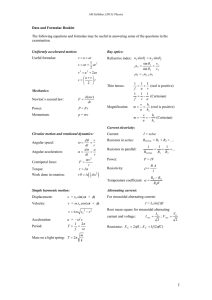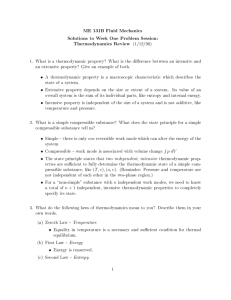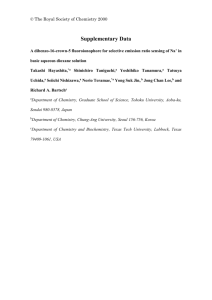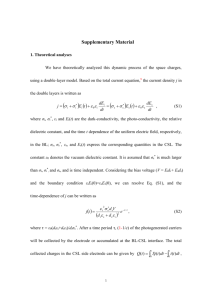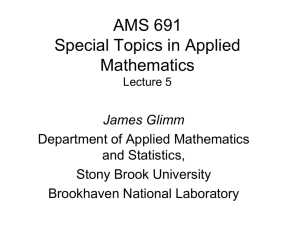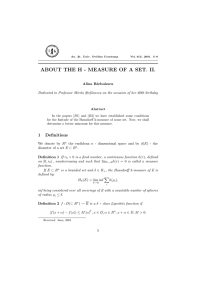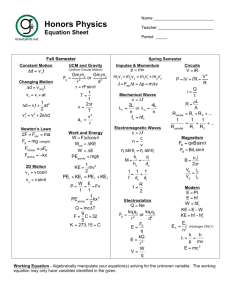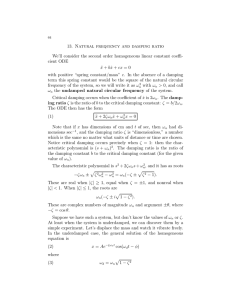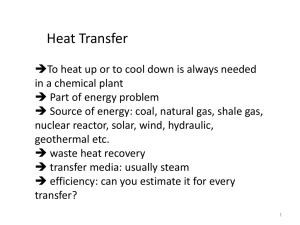thermodynamics
advertisement
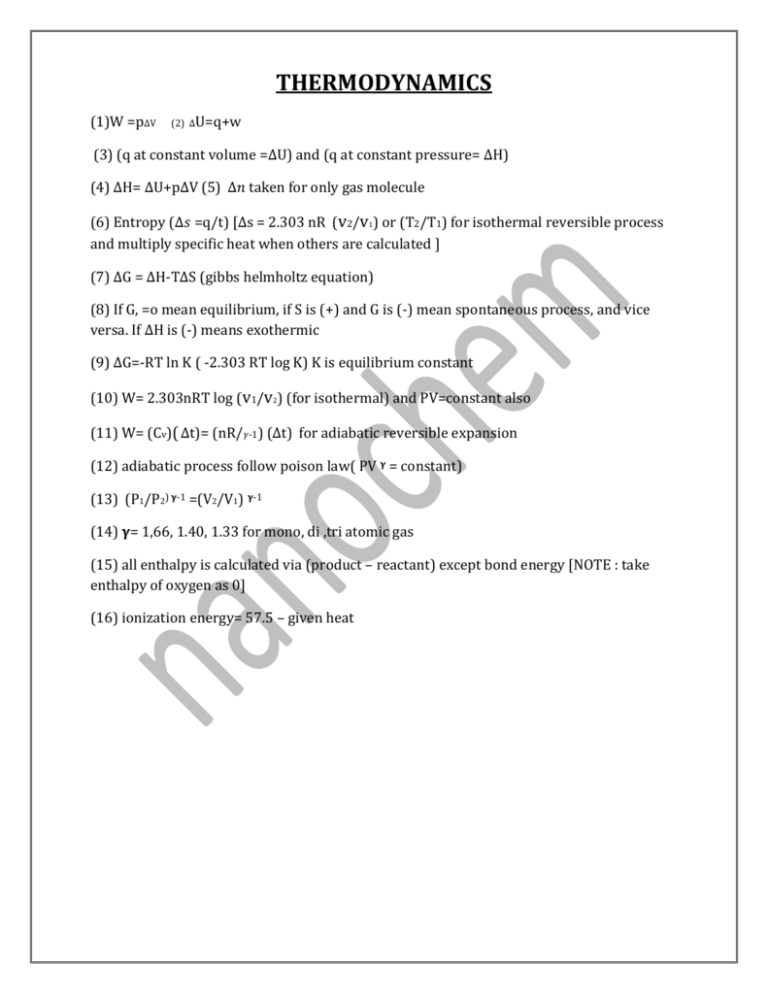
THERMODYNAMICS (1)W =p∆V (2) ∆U=q+w (3) (q at constant volume =∆U) and (q at constant pressure= ∆H) (4) ∆H= ∆U+p∆V (5) ∆𝑛 taken for only gas molecule (6) Entropy (∆𝑠 =q/t) [∆s = 2.303 nR (v2/v1) or (T2/T1) for isothermal reversible process and multiply specific heat when others are calculated ] (7) ∆G = ∆H-T∆S (gibbs helmholtz equation) (8) If G, =o mean equilibrium, if S is (+) and G is (-) mean spontaneous process, and vice versa. If ∆H is (-) means exothermic (9) ∆G=-RT ln K ( -2.303 RT log K) K is equilibrium constant (10) W= 2.303nRT log (v1/v2) (for isothermal) and PV=constant also (11) W= (Cv)( ∆t)= (nR/𝛾-1) (∆t) for adiabatic reversible expansion (12) adiabatic process follow poison law( PV 𝛄 = constant) (13) (P1/P2) 𝛄-1 =(V2/V1) 𝛄-1 (14) 𝛄= 1,66, 1.40, 1.33 for mono, di ,tri atomic gas (15) all enthalpy is calculated via (product – reactant) except bond energy [NOTE : take enthalpy of oxygen as 0] (16) ionization energy= 57.5 – given heat
